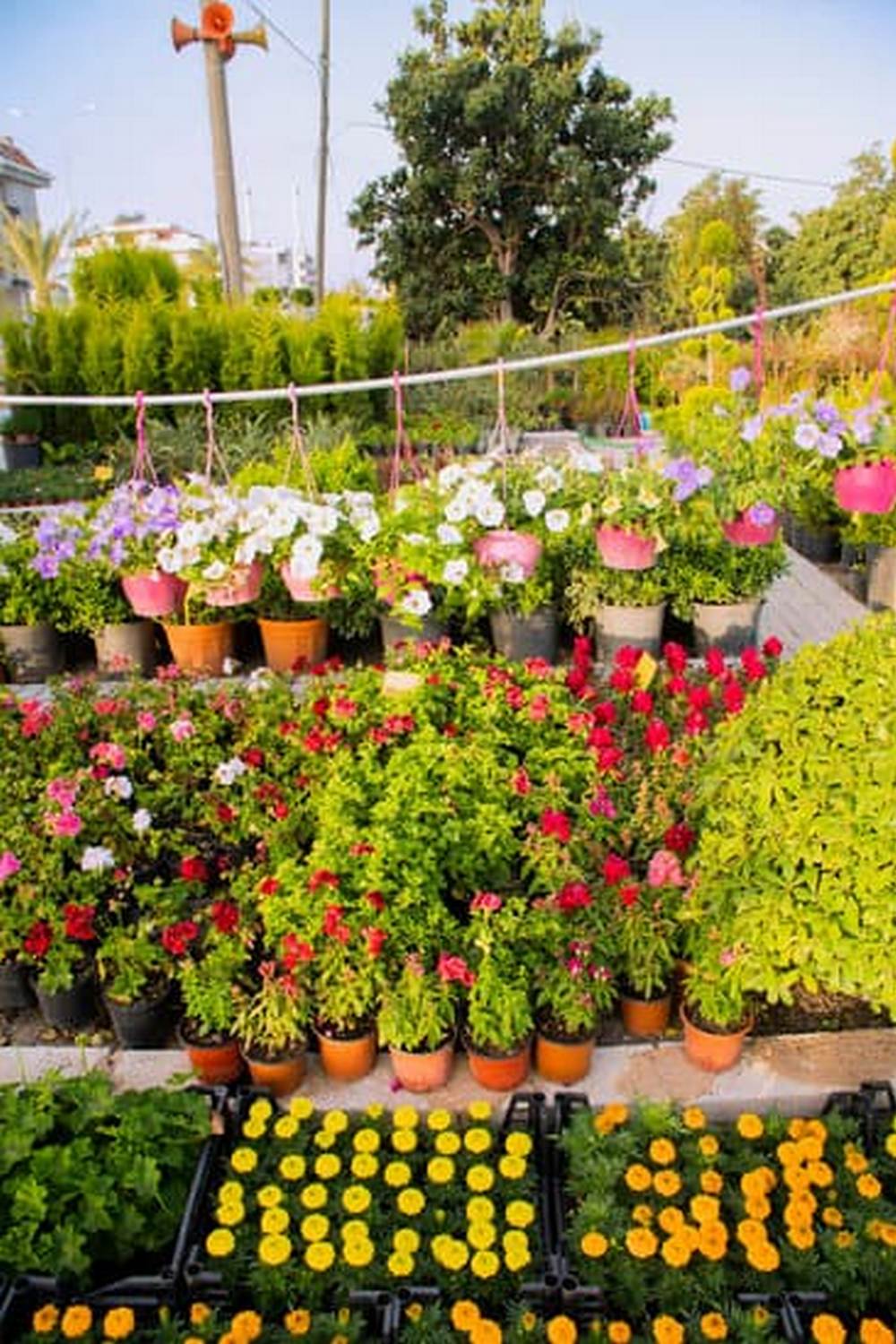Vegetable gardens for children themed offer a wonderful opportunity for kids to learn about nature, responsibility, and healthy eating habits in a fun and interactive way. In this article, we will delve into the various benefits of incorporating vegetable gardens into children’s lives, from educational value to physical activity.
By immersing children in the process of growing their own fruits and vegetables, they not only gain a deeper understanding of where food comes from but also develop important life skills such as patience, perseverance, and self-reliance. This hands-on experience fosters a sense of pride and accomplishment in children as they witness the literal fruits of their labor flourishing before their eyes.
From selecting the perfect vegetables to planting and maintenance tips, this article will guide you through creating a successful vegetable garden tailored specifically for children. By providing engaging activities and encouraging children to actively participate in every step of the process, we aim to inspire the next generation of gardeners who will appreciate the benefits of growing their own food.
Getting Started
When it comes to starting a vegetable garden for children, selecting the right location is key to ensuring their success and enjoyment. Children are more likely to stay engaged and interested in gardening if their vegetable garden is easily accessible and visible.
One important tip for choosing the right location for a children’s vegetable garden is to pick a spot that receives plenty of sunlight. Most vegetables require at least six hours of direct sunlight each day to thrive, so be sure to choose a sunny spot in your yard or backyard.
Consider Accessibility
Another factor to consider when choosing the location for a children’s vegetable garden is accessibility. Pick a spot that is easily accessible to children so they can actively participate in planting, watering, weeding, and harvesting their vegetables. A raised bed can be a great option for a children’s vegetable garden as it brings the plants up to eye level, making it easier for kids to reach and tend to their crops.
Ensure Good Drainage
Good drainage is essential for the success of any vegetable garden, especially one designed for children. Make sure that the location you choose has well-drained soil to prevent waterlogging, which can lead to root rot and other issues.
If your chosen spot has poor drainage, consider building raised beds or incorporating compost and organic matter into the soil to improve its structure and drainage capabilities. By selecting a location with good drainage, you can create an ideal environment for your children’s vegetable garden to flourish.
Selecting the Perfect Vegetables
Selecting kid-friendly vegetables to plant in a children’s vegetable garden is essential for ensuring a successful and engaging gardening experience. When choosing the perfect vegetables, it is important to consider not only what grows well in your area but also what will capture the interest of children. Vegetables that are colorful, fast-growing, and easy to harvest are excellent choices for young gardeners.
Carrots are an excellent option for children’s vegetable gardens due to their vibrant colors and sweet taste. Kids will enjoy pulling up these root vegetables from the soil and being rewarded with a crunchy snack. Another great choice is cherry tomatoes, which are not only fun to pick off the vine but also packed with flavor. Peas are also a kid-friendly vegetable that can be enjoyed straight from the plant or added to salads and stir-fries.
In addition to carrots, cherry tomatoes, and peas, other popular choices for children’s vegetable gardens include radishes, cucumbers, and zucchini. These vegetables are relatively easy to grow and maintain, making them ideal for young aspiring gardeners. By selecting a variety of colorful and tasty vegetables, you can create a diverse garden that will keep kids excited about growing their own food.
| Vegetable | Benefits |
|---|---|
| Carrots | Colorful, sweet taste, fun to harvest |
| Cherry Tomatoes | Flavorful, fun to pick off the vine |
| Peas | Easily enjoyed straight from the plant or in dishes |
Tools and Supplies
Engaging children in gardening through vegetable gardens can be a rewarding and educational experience for them. To get started, it is essential to have the right tools and supplies on hand to make the process smooth and enjoyable. One of the key items needed for gardening with children is a set of child-sized gardening tools. These tools are tailored to fit small hands, making it easier for kids to participate actively in planting and maintaining their vegetable garden.
In addition to child-sized gardening tools, other essential supplies include watering cans or hoses, soil, seeds or seedlings, gloves, and garden markers. It is also important to have a kid-friendly gardening book or guide on hand to provide valuable information about the planting process and different vegetables that can be grown. By having these supplies readily available, children will have everything they need to start their vegetable garden journey.
To further enhance the experience of gardening with children, consider incorporating fun and colorful accessories such as decorative planters, whimsical garden stakes, or even personalized aprons for the young gardeners. These items can help create a sense of excitement and ownership over the vegetable garden project. With the right tools and supplies in place, children will be well-equipped to learn about nature, responsibility, and healthy eating habits through their very own vegetable gardens.
| Essential Items | Importance |
|---|---|
| Child-sized gardening tools | Tools tailored for small hands for active participation |
| Watering cans or hoses | To ensure proper hydration of plants |
| Seeds or seedlings | Key elements for starting a vegetable garden |
| Gloves | To protect little hands while gardening |
Planting and Maintenance
Planting a vegetable garden with children can be a fun and educational experience for both kids and adults. It teaches them about the importance of growing their own food, encourages healthy eating habits, and instills a sense of responsibility. To start a successful children’s vegetable garden, follow this step-by-step guide to planting and maintenance.
Choosing the Right Plants
When selecting vegetables for a children’s garden, it is essential to choose plants that are easy to grow and maintain. Some kid-friendly options include cherry tomatoes, strawberries, carrots, snap peas, and sunflowers. These plants are not only simple to care for but also produce colorful fruits or flowers that will captivate children’s interest.
Preparing the Soil
Before planting any vegetables, it is crucial to prepare the soil properly. Involve children in this process by teaching them how to dig, loosen the soil, mix in compost or organic fertilizer, and create rows or mounds for planting. This hands-on activity will help them understand the importance of soil health in growing healthy plants.
Watering and Maintenance
Once the vegetables are planted, explain to children the significance of watering regularly and keeping an eye out for pests or diseases. Create a watering schedule that they can follow and encourage them to check on their plants daily. Additionally, involve children in simple maintenance tasks such as weeding, mulching, and fertilizing as needed. By actively participating in caring for their vegetable garden, kids will develop a sense of ownership and pride in their work.
Engaging Activities
Introducing engaging activities in a vegetable garden for children themed not only keeps them entertained but also provides valuable learning experiences. Here are some creative ideas to get kids excited about gardening:
- Scavenger Hunt: Create a list of items related to the garden, such as seeds, flowers, bugs, or specific vegetables they need to find. This activity encourages children to explore the garden while learning about different elements.
- DIY Garden Markers: Let children unleash their creativity by designing and making their own garden markers using materials such as rocks, popsicle sticks, or wooden spoons. Not only does this personalize their space but it also helps them identify plants easily.
- Garden Journal: Encourage kids to keep a journal where they can document their observations, drawings, and notes about the growth of plants. This not only enhances their writing skills but also teaches them about the lifecycle of vegetables.
These activities not only make gardening fun for children but also instill in them a sense of responsibility and curiosity towards nature. By incorporating these engaging projects, parents can inspire their little ones to develop a love for gardening that will last a lifetime.
Harvesting and Eating
When it comes to vegetable gardens for children themed, encouraging kids to harvest and eat the fruits (and vegetables) of their labor is a crucial step in fostering their love for gardening and healthy eating. Here are some tips on how to make the harvesting and eating process enjoyable for children:
- Involve children in the harvest: Encourage children to actively participate in harvesting vegetables from the garden. Teach them how to properly pick ripe produce and involve them in gathering different types of vegetables.
- Create a fun tasting experience: Turn the vegetable tasting into a sensory adventure by encouraging kids to touch, smell, and taste the freshly harvested produce. Use descriptive words to help them understand the different flavors and textures.
- Get creative with cooking: Inspire children to get involved in preparing simple recipes using the vegetables they have grown. From making fresh salads to veggie stir-fries, involving kids in cooking can make them more excited about eating their homegrown produce.
By incorporating these activities into the gardening experience, you can empower children to appreciate the hard work that goes into growing food while instilling healthy eating habits that will benefit them for years to come. Enjoying the fruits (and vegetables) of their labor will not only be satisfying but also educational as they gain a deeper understanding of where their food comes from.
Conclusion
In conclusion, vegetable gardens for children themed are not just about growing plants; they are about nurturing curiosity, responsibility, and a love for nature. Through these gardens, children can learn important life skills such as patience, teamwork, and the value of hard work. It is also a great way to instill healthy eating habits from a young age and promote environmental awareness.
By providing children with their own vegetable garden, we are empowering them to make healthier choices and giving them a sense of accomplishment as they watch their plants grow and flourish. These gardens can serve as a valuable tool for teaching kids about where their food comes from and the importance of sustainable living practices.
Additionally, gardening can be a therapeutic activity that helps reduce stress and anxiety in children, providing them with a sense of purpose and connection to the natural world.
Overall, vegetable gardens for children are an excellent way to inspire the next generation of gardeners and environmental stewards. Through these hands-on experiences, children can develop a deeper appreciation for the environment and cultivate a lifelong passion for gardening. So why not start your own children’s vegetable garden today and watch as your little ones bloom into green-thumbed enthusiasts who will continue to carry on this tradition for generations to come?
Frequently Asked Questions
What Is the Best Vegetable Garden for Kids?
The best vegetable garden for kids is one that includes a variety of easy-to-grow vegetables like cherry tomatoes, carrots, peas, and lettuce. These veggies are not only simple to cultivate but also fun for children to harvest and eat.
How Do I Start a Vegetable Garden for Kids?
To start a vegetable garden for kids, begin by selecting a suitable location with plenty of sunlight and good soil drainage. Engage children in the planning process by allowing them to choose which vegetables they want to grow.
Start with easy-to-grow plants and involve kids in every step of the gardening process, from planting seeds to watering and weeding.
What Are Some Garden Veggies Ideas?
Some garden veggies ideas that are great for kids include peppers, cucumbers, radishes, and zucchini. These vegetables are colorful, flavorful, and provide a sensory experience for children as they explore different textures, shapes, and tastes in the garden.
Additionally, growing herbs like basil or mint can add an extra element of learning and creativity to a kid’s vegetable garden project.

If you’re looking to get into vegetable gardening, or are just looking for some tips on how to make your current garden better, then you’ve come to the right place! My name is Ethel and I have been gardening for years. In this blog, I’m going to share with you some of my best tips on how to create a successful vegetable garden.





